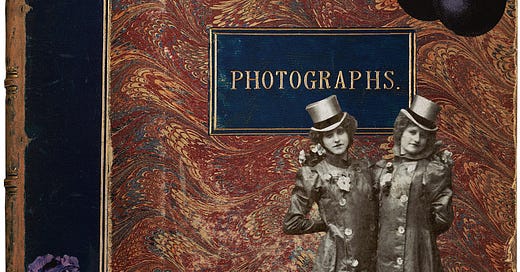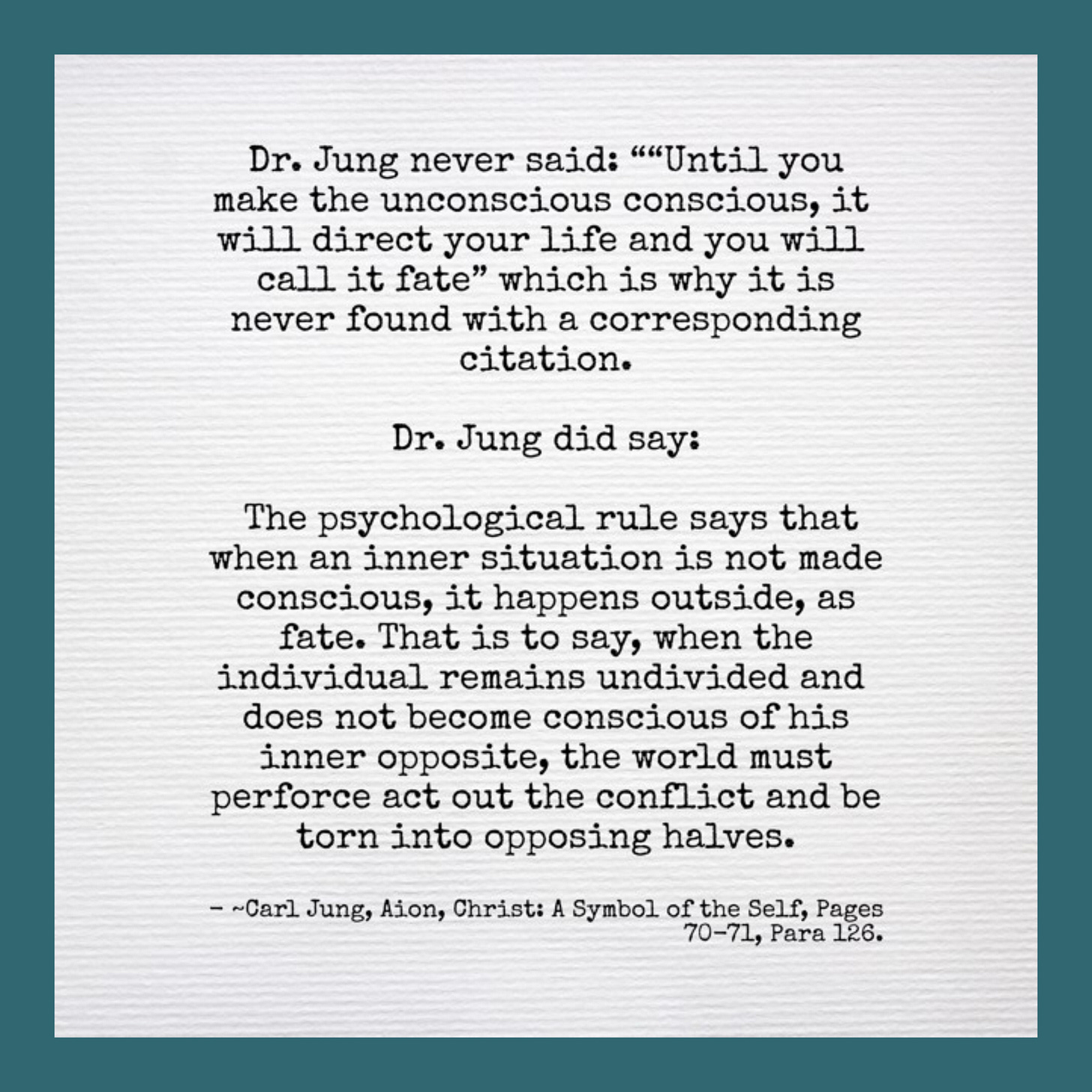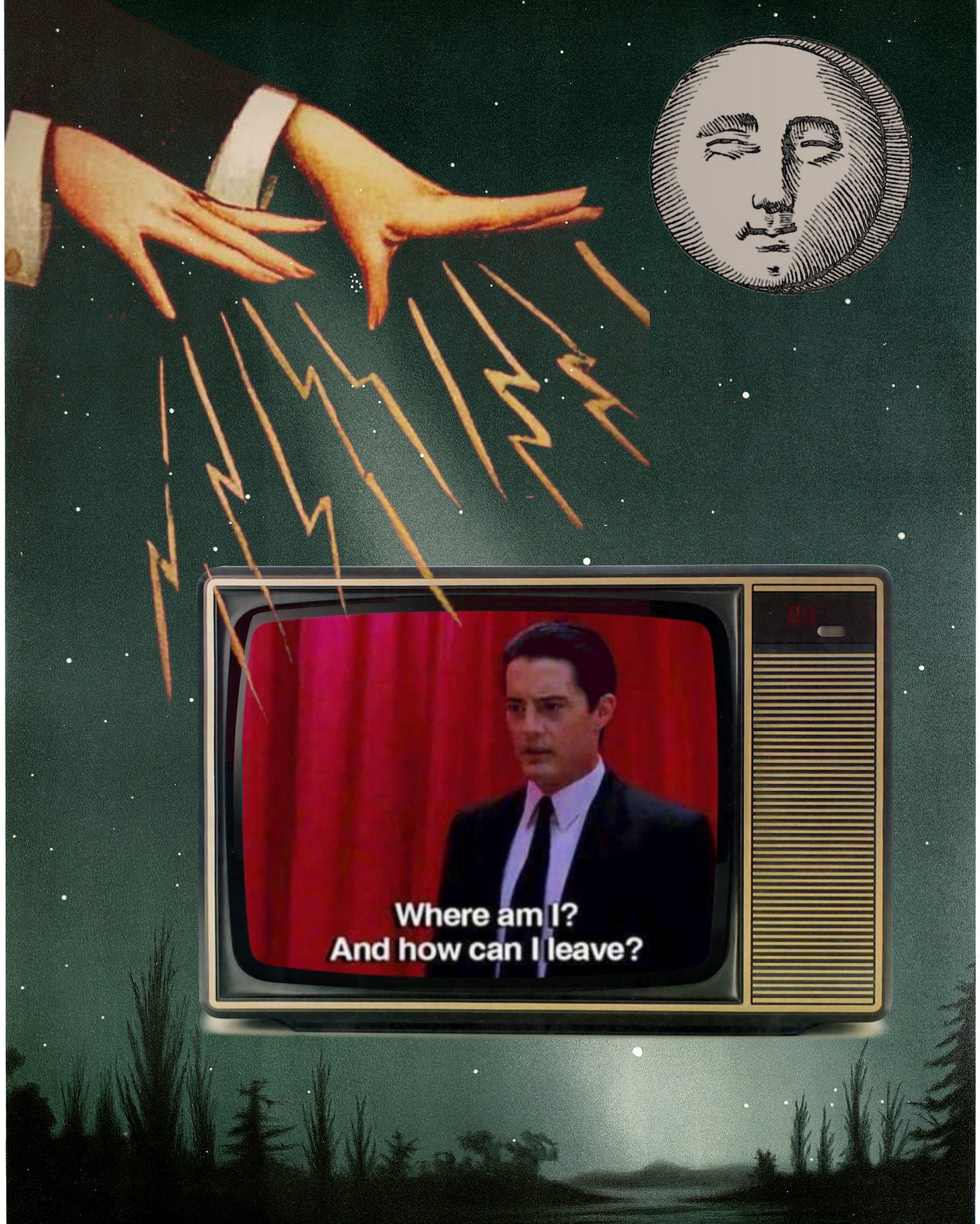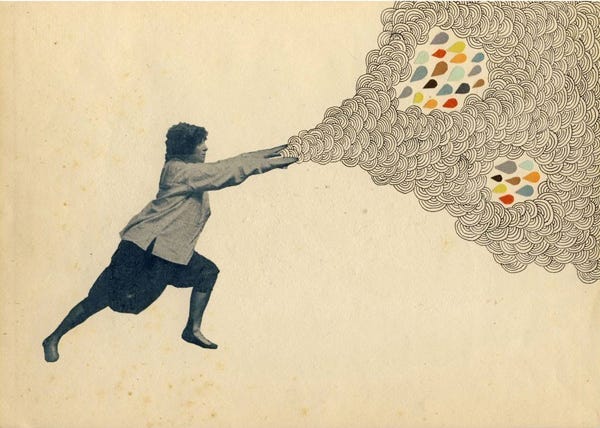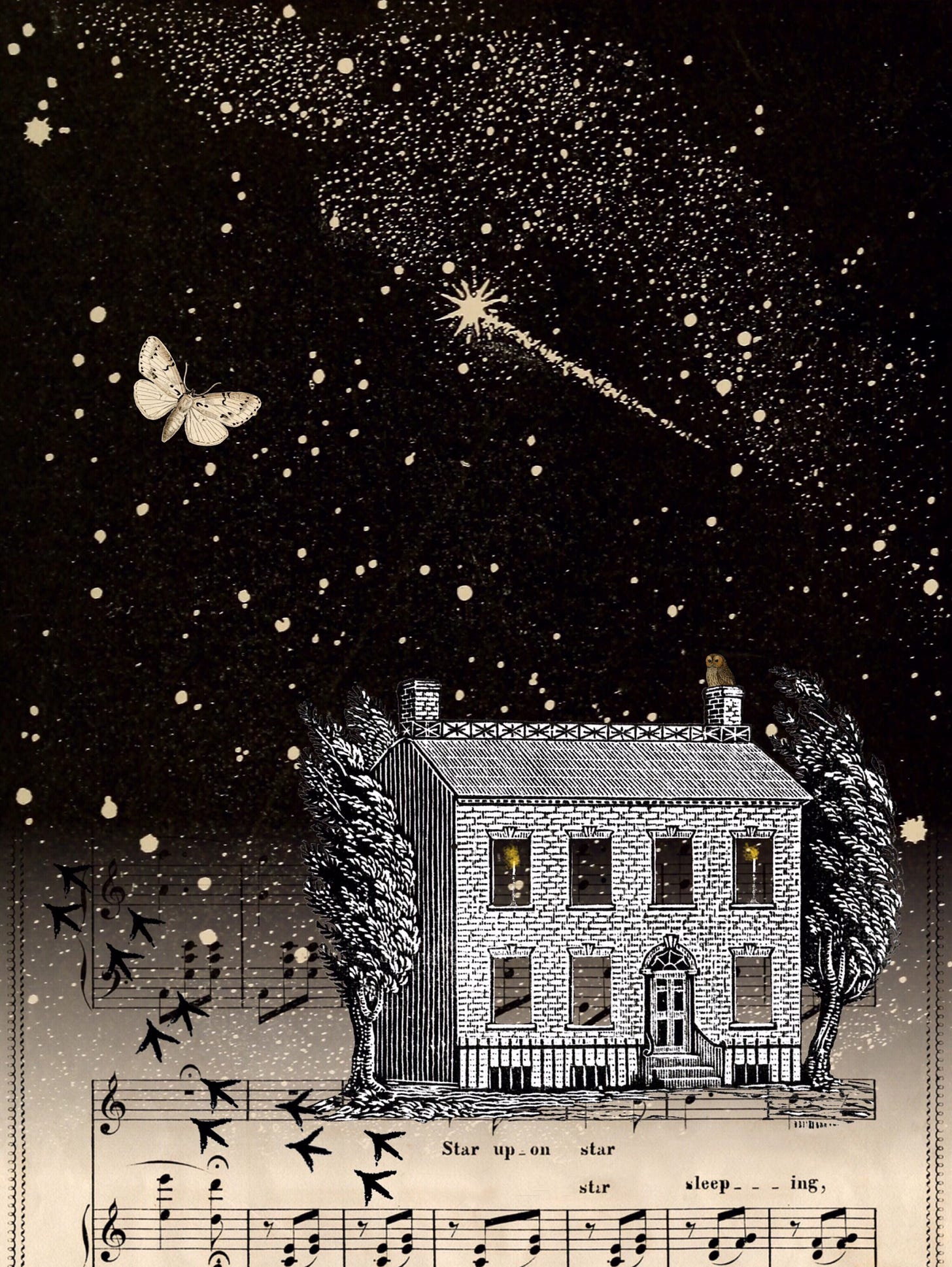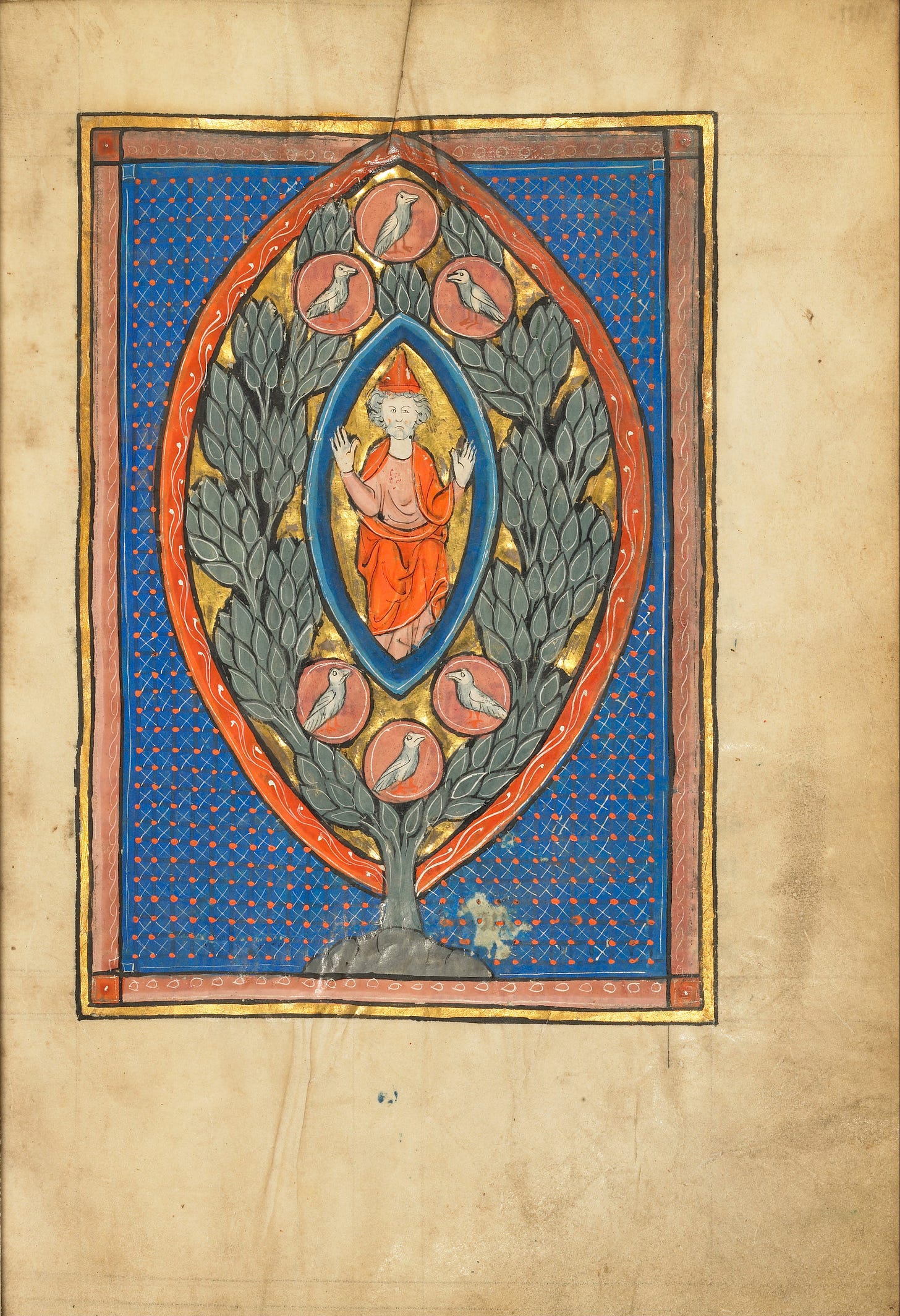“The world is filled with profound beauty and tragedy, and it is through art that we can reconcile these contradictions.”
Division of cells creates new life, but division is also at the heart of most human problems (which of course then become animal and Earth problems). Our division as a species from the planet that is our only possible home, and the other creatures and flora that we unthinkingly trample. Political and social divisions, ever more amplified by agents of disinformation and exploiters of division. So dystopian has this become, divisions are being fomented between people who care about other people and the planet and ‘people’ (or bots) who don’t. All so the mind-bendingly rich can get richer.
Those divisions we can’t do much about on our own. One cure is community – one of the reasons why I started this publication. Another is to work to heal the divisions within ourselves. I’d argue that this is the most purposeful and creative act of our entire lifespans. Far greater minds than mine have certainly believed so.
My understanding of the ‘Shadow’ within each of us is that it’s the bits of ourselves we disown, hide, and ignore through shame, guilt, fear, obligation, and socialisation. And underneath it all is a creative goldmine. Jung called the Shadow ‘the seat of creativity’.
As you likely know, this magazine is mostly aimed at people middle-aged and older. According to Jung, this is exactly the time to be doing ‘shadow work’: reclaiming those rejected parts of ourselves. Making whole what was once divided. Something I think of as boiling down to, effectively, ‘love your wounds’.
There’s an interesting summary of details about the Shadow and Shadow work by Scott Jeffrey here.
“When we’re divorced from our dark side, we:
Do things we wouldn’t voluntarily do and later regret (if we catch it).
Feel anxious or depressed and we don’t know why.
Engage in self-sabotage or self-loathing.
Say things we wouldn’t otherwise say.
Swing from ego inflation (grandiosity) to ego deflation (insecurity).
Act self-absorbed (lack awareness of how our actions influence others).
Have low self-esteem because of a persistent critical inner voice.
Struggle in our relationships (with frequent conflicts).”
Does any of that sound at all familiar? Have you already done any Shadow work?
I’m a huge fan of David Lynch and still very sad that the world has lost access to him. It’s a combination of things. I’ve enjoyed much of his darkly dreaming work. I’m fascinated by the pureness of his access to and use of his creativity – how he just lived it all day, most days. His steadfastness about his own style and vision. Our mutual love of diners and neon.
But above all, I admire how Lynch combined a golly-gee-whiz pseudo-1950s dreamy and childlike quality with the darkest of the dark side of America. He was able to hold both things, live with their paradox, and make something new with them. That is true creative maturity, and again at seeming odds with his childlike-seeming nature.
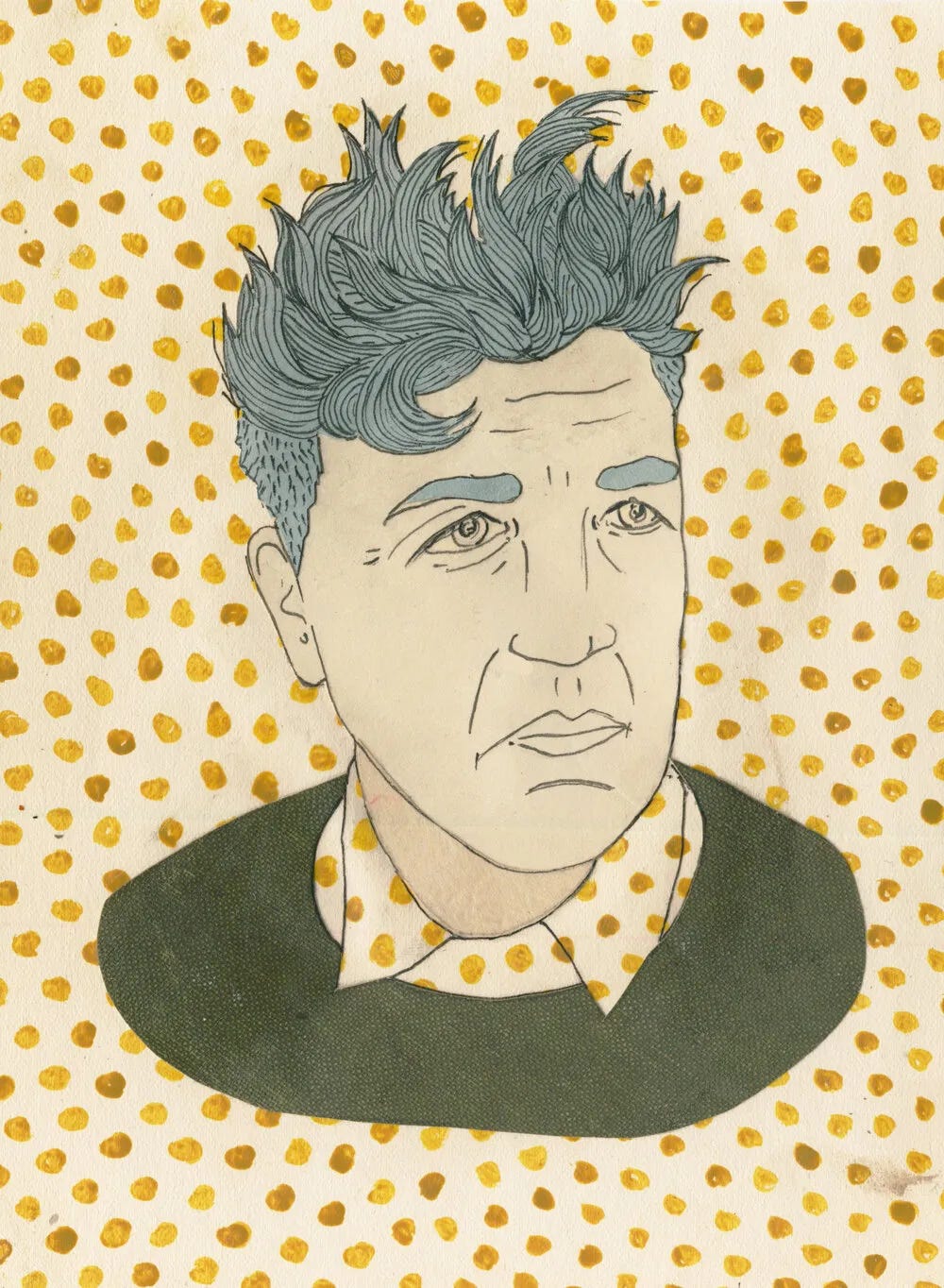
Interestingly, Jung found that people started feeling compelled to act creatively at a certain point in their journey to wholeness. I have found that Shadow work becomes deeper and more effective – as well as more enjoyable – when done creatively rather than the kind of ‘sit down and ask yourself questions’ type of exercise Scott Jeffrey describes. I’ve started looking for Shadow Stuff in the work of artists I was already inspired by, sometimes a number of years ago, before I had those goggles on.
Take this print of ‘Adalyn’s party trick’. Hollie Chastain was one of the artists I was drawn to early on in my own creative renaissance. I credit her and a few others with steering me more towards collage in my visual play. Through this I came to a better understanding of life itself, of memory, making sense, and the potential in what has been discarded but can be reclaimed.
Over time I came to know that collage is Shadow work, and Shadow work is a kind of collage.
I bought the print years ago for myself, gave it to a friend in France (because I knew he’d like it, later realising it was also so I could continue to visit it), and eventually bought my own again. Adaline reminds me somehow of my Welsh grandmother Morfydd, who wanted to go to art school when she was young and never could. I love the energy in it, the unfettered outpouring of long-pent-up creative energy that I feel represents the midlife creative renaissance I’m thrashing towards, more on some days than others.
I’ve only realised, writing this today and glancing at Adaline on my wall, that she’s directing a Shadow outwards, with colour and complexity (trapped? delivered? promised?) inside. Each time I see the Shadow nature of something outside myself it feels like a slow accrual of Shadow work inside.
So I’ve recently started noticing Shadowy elements in my own past work, too.
“To honour and accept one’s own shadow is a profound spiritual discipline. It is whole-making and thus holy and the most important experience of a lifetime.”
🌱 Robert A Johnson, Owning Your Own Shadow
I really recommend Johnson’s book for understanding the Shadow and learning to love it and live with and through it. There are a few too many references to God to be comfortable for a [col]lapsed Catholic like me, but that’s more than compensated for.
For me the most powerful concept in the book is the ‘mandorla’, which I now look for – and look to create – everywhere. I hope you’ll forgive me for pointing out that the mandorla resembles not so much an almond as a vagina, which seems fitting.
“In the Four Quartets, T.S. Eliot writes, ‘The fire and the rose are one.’ By overlapping the two elements of fire and flower, he makes a mandorla. We are pleased to the depth of our soul to be told that the fire of transformation and the flower of rebirth are one and the same.”
🌱 Robert A Johnson, Owning Your Own Shadow
Let me know about your own thoughts and experiences with the Shadow and its role (or not) in your creativity. It seems more essential work than ever now, with the world being what it is. We can’t always heal wounds and divisions but, with courage and curiosity, we can transform them into truth, beauty, and community.


